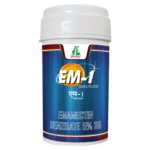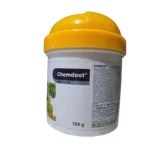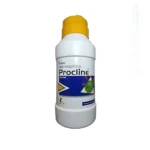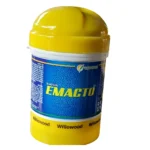Acid Lime Pests
Fruit Sucker Moth
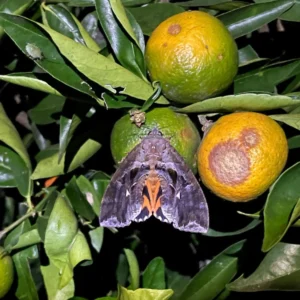
Symptoms
- Fruit Boring: The primary damage is caused by the larval stage, where caterpillars bore into the fruit, creating entry holes. The feeding creates tunnels inside the fruit, leading to decay and secondary infection by pathogens.
- Premature Fruit Drop: Infested fruits often fall prematurely, reducing the overall yield of the orchard.
- Fruit Rot: The boring and feeding activities create openings for fungi and bacteria, causing fruit rot and rendering the fruit unsellable.
- Fruit Sucking: Adults also cause damage by piercing the skin of ripe fruits to suck out juice, leaving behind small holes that can be entry points for diseases.
Identification
Adult Moths:
- Appearance: Adult fruit sucker moths are medium-sized with a wingspan of about 40-50 mm. Their forewings are generally brown or gray, with darker patterns that help them blend into their surroundings. The hindwings are often bright orange or yellow with black spots, which are visible when the moth is at rest or in flight.
- Behavior: Adult moths are nocturnal and are active at night. They are attracted to ripe or overripe fruits, where they feed on the fruit juice by piercing the fruit skin with their proboscis.
Larvae (Caterpillars):
- Appearance: The caterpillars are robust and can grow up to 50 mm in length. They are usually green or brown with distinctive black and yellow markings, depending on their instar stage.
- Behavior: The larvae feed on the flesh of citrus fruits, boring into the fruit and causing significant damage.
Management
Tinospora weed host have to be destroyed. Bait with fermented molasses plus . Bag the fruits with polythene bags punctured at the bottom. Apply smoke and set up light traps or food lures (pieces of citrus fruits) for control.
|
Insecticide |
Dosage |
|---|---|
|
1 ml/lit |
|
|
Bacillus Thuringiensis Var. Kurstaki Serotype 3a, 3b, Sa Ii WG |
1 gm/lit |
|
0.5 gm/lit |
₹448
Select options
This product has multiple variants. The options may be chosen on the product page
₹499
Select options
This product has multiple variants. The options may be chosen on the product page
₹650
Select options
This product has multiple variants. The options may be chosen on the product page
₹219
Select options
This product has multiple variants. The options may be chosen on the product page
₹399
Select options
This product has multiple variants. The options may be chosen on the product page
